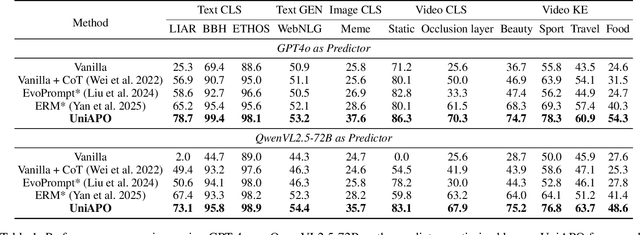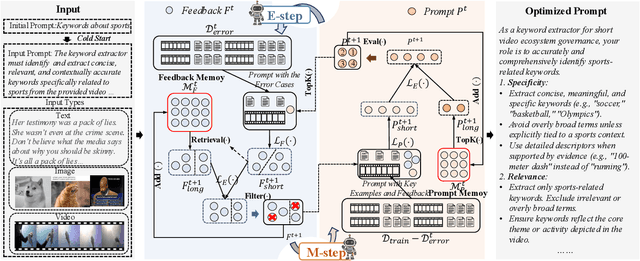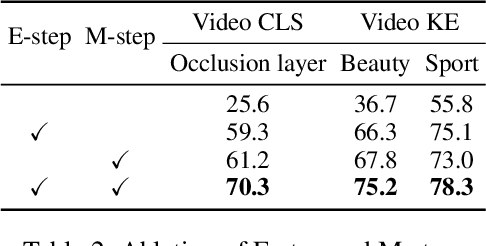Yan Li
University of Minnesota
GTCN-G: A Residual Graph-Temporal Fusion Network for Imbalanced Intrusion Detection (Preprint)
Oct 08, 2025Abstract:The escalating complexity of network threats and the inherent class imbalance in traffic data present formidable challenges for modern Intrusion Detection Systems (IDS). While Graph Neural Networks (GNNs) excel in modeling topological structures and Temporal Convolutional Networks (TCNs) are proficient in capturing time-series dependencies, a framework that synergistically integrates both while explicitly addressing data imbalance remains an open challenge. This paper introduces a novel deep learning framework, named Gated Temporal Convolutional Network and Graph (GTCN-G), engineered to overcome these limitations. Our model uniquely fuses a Gated TCN (G-TCN) for extracting hierarchical temporal features from network flows with a Graph Convolutional Network (GCN) designed to learn from the underlying graph structure. The core innovation lies in the integration of a residual learning mechanism, implemented via a Graph Attention Network (GAT). This mechanism preserves original feature information through residual connections, which is critical for mitigating the class imbalance problem and enhancing detection sensitivity for rare malicious activities (minority classes). We conducted extensive experiments on two public benchmark datasets, UNSW-NB15 and ToN-IoT, to validate our approach. The empirical results demonstrate that the proposed GTCN-G model achieves state-of-the-art performance, significantly outperforming existing baseline models in both binary and multi-class classification tasks.
UniAPO: Unified Multimodal Automated Prompt Optimization
Aug 25, 2025



Abstract:Prompting is fundamental to unlocking the full potential of large language models. To automate and enhance this process, automatic prompt optimization (APO) has been developed, demonstrating effectiveness primarily in text-only input scenarios. However, extending existing APO methods to multimodal tasks, such as video-language generation introduces two core challenges: (i) visual token inflation, where long visual token sequences restrict context capacity and result in insufficient feedback signals; (ii) a lack of process-level supervision, as existing methods focus on outcome-level supervision and overlook intermediate supervision, limiting prompt optimization. We present UniAPO: Unified Multimodal Automated Prompt Optimization, the first framework tailored for multimodal APO. UniAPO adopts an EM-inspired optimization process that decouples feedback modeling and prompt refinement, making the optimization more stable and goal-driven. To further address the aforementioned challenges, we introduce a short-long term memory mechanism: historical feedback mitigates context limitations, while historical prompts provide directional guidance for effective prompt optimization. UniAPO achieves consistent gains across text, image, and video benchmarks, establishing a unified framework for efficient and transferable prompt optimization.
MUSE: Multi-Subject Unified Synthesis via Explicit Layout Semantic Expansion
Aug 20, 2025Abstract:Existing text-to-image diffusion models have demonstrated remarkable capabilities in generating high-quality images guided by textual prompts. However, achieving multi-subject compositional synthesis with precise spatial control remains a significant challenge. In this work, we address the task of layout-controllable multi-subject synthesis (LMS), which requires both faithful reconstruction of reference subjects and their accurate placement in specified regions within a unified image. While recent advancements have separately improved layout control and subject synthesis, existing approaches struggle to simultaneously satisfy the dual requirements of spatial precision and identity preservation in this composite task. To bridge this gap, we propose MUSE, a unified synthesis framework that employs concatenated cross-attention (CCA) to seamlessly integrate layout specifications with textual guidance through explicit semantic space expansion. The proposed CCA mechanism enables bidirectional modality alignment between spatial constraints and textual descriptions without interference. Furthermore, we design a progressive two-stage training strategy that decomposes the LMS task into learnable sub-objectives for effective optimization. Extensive experiments demonstrate that MUSE achieves zero-shot end-to-end generation with superior spatial accuracy and identity consistency compared to existing solutions, advancing the frontier of controllable image synthesis. Our code and model are available at https://github.com/pf0607/MUSE.
Should Bias Always be Eliminated? A Principled Framework to Use Data Bias for OOD Generation
Jul 22, 2025Abstract:Most existing methods for adapting models to out-of-distribution (OOD) domains rely on invariant representation learning to eliminate the influence of biased features. However, should bias always be eliminated -- and if not, when should it be retained, and how can it be leveraged? To address these questions, we first present a theoretical analysis that explores the conditions under which biased features can be identified and effectively utilized. Building on this theoretical foundation, we introduce a novel framework that strategically leverages bias to complement invariant representations during inference. The framework comprises two key components that leverage bias in both direct and indirect ways: (1) using invariance as guidance to extract predictive ingredients from bias, and (2) exploiting identified bias to estimate the environmental condition and then use it to explore appropriate bias-aware predictors to alleviate environment gaps. We validate our approach through experiments on both synthetic datasets and standard domain generalization benchmarks. Results consistently demonstrate that our method outperforms existing approaches, underscoring its robustness and adaptability.
A Collaborative Framework Integrating Large Language Model and Chemical Fragment Space: Mutual Inspiration for Lead Design
Jul 17, 2025



Abstract:Combinatorial optimization algorithm is essential in computer-aided drug design by progressively exploring chemical space to design lead compounds with high affinity to target protein. However current methods face inherent challenges in integrating domain knowledge, limiting their performance in identifying lead compounds with novel and valid binding mode. Here, we propose AutoLeadDesign, a lead compounds design framework that inspires extensive domain knowledge encoded in large language models with chemical fragments to progressively implement efficient exploration of vast chemical space. The comprehensive experiments indicate that AutoLeadDesign outperforms baseline methods. Significantly, empirical lead design campaigns targeting two clinically relevant targets (PRMT5 and SARS-CoV-2 PLpro) demonstrate AutoLeadDesign's competence in de novo generation of lead compounds achieving expert-competitive design efficacy. Structural analysis further confirms their mechanism-validated inhibitory patterns. By tracing the process of design, we find that AutoLeadDesign shares analogous mechanisms with fragment-based drug design which traditionally rely on the expert decision-making, further revealing why it works. Overall, AutoLeadDesign offers an efficient approach for lead compounds design, suggesting its potential utility in drug design.
Kwai Keye-VL Technical Report
Jul 02, 2025Abstract:While Multimodal Large Language Models (MLLMs) demonstrate remarkable capabilities on static images, they often fall short in comprehending dynamic, information-dense short-form videos, a dominant medium in today's digital landscape. To bridge this gap, we introduce \textbf{Kwai Keye-VL}, an 8-billion-parameter multimodal foundation model engineered for leading-edge performance in short-video understanding while maintaining robust general-purpose vision-language abilities. The development of Keye-VL rests on two core pillars: a massive, high-quality dataset exceeding 600 billion tokens with a strong emphasis on video, and an innovative training recipe. This recipe features a four-stage pre-training process for solid vision-language alignment, followed by a meticulous two-phase post-training process. The first post-training stage enhances foundational capabilities like instruction following, while the second phase focuses on stimulating advanced reasoning. In this second phase, a key innovation is our five-mode ``cold-start'' data mixture, which includes ``thinking'', ``non-thinking'', ``auto-think'', ``think with image'', and high-quality video data. This mixture teaches the model to decide when and how to reason. Subsequent reinforcement learning (RL) and alignment steps further enhance these reasoning capabilities and correct abnormal model behaviors, such as repetitive outputs. To validate our approach, we conduct extensive evaluations, showing that Keye-VL achieves state-of-the-art results on public video benchmarks and remains highly competitive on general image-based tasks (Figure 1). Furthermore, we develop and release the \textbf{KC-MMBench}, a new benchmark tailored for real-world short-video scenarios, where Keye-VL shows a significant advantage.
Efficient Extreme Operating Condition Search for Online Relay Setting Calculation in Renewable Power Systems Based on Parallel Graph Neural Network
Jun 24, 2025Abstract:The Extreme Operating Conditions Search (EOCS) problem is one of the key problems in relay setting calculation, which is used to ensure that the setting values of protection relays can adapt to the changing operating conditions of power systems over a period of time after deployment. The high penetration of renewable energy and the wide application of inverter-based resources make the operating conditions of renewable power systems more volatile, which urges the adoption of the online relay setting calculation strategy. However, the computation speed of existing EOCS methods based on local enumeration, heuristic algorithms, and mathematical programming cannot meet the efficiency requirement of online relay setting calculation. To reduce the time overhead, this paper, for the first time, proposes an efficient deep learning-based EOCS method suitable for online relay setting calculation. First, the power system information is formulated as four layers, i.e., a component parameter layer, a topological connection layer, an electrical distance layer, and a graph distance layer, which are fed into a parallel graph neural network (PGNN) model for feature extraction. Then, the four feature layers corresponding to each node are spliced and stretched, and then fed into the decision network to predict the extreme operating condition of the system. Finally, the proposed PGNN method is validated on the modified IEEE 39-bus and 118-bus test systems, where some of the synchronous generators are replaced by renewable generation units. The nonlinear fault characteristics of renewables are fully considered when computing fault currents. The experiment results show that the proposed PGNN method achieves higher accuracy than the existing methods in solving the EOCS problem. Meanwhile, it also provides greater improvements in online computation time.
AviationLLM: An LLM-based Knowledge System for Aviation Training
Jun 17, 2025Abstract:Aviation training is a core link in ensuring flight safety, improving industry efficiency and promoting sustainable development. It not only involves flight simulation but also requires the learning of a great deal of professional aviation theory knowledge. In the existing training system, the knowledge is mainly imparted by the the instructors. However, the number of instructors is limited and the professional answers obtained from the Internet are not accurate enough, resulting in low training efficiency. To address this, we introduced LLM, but the basic pre-trained model cannot provide accurate answers to professional fields, so we fine-tuned it. Traditional Supervised Fine-Tuning (SFT) risk generating superficially plausible but factually incorrect responses due to insufficient data coverage. To address this, we employ Direct Preference Optimization(DPO). This paper proposes Retrieval-Augmented LLM Alignment via Direct Preference Optimization(RALA-DPO). We select open source pre-trained LLM Qwen and adapt it to aviation theory training through DPO-based domain alignment. Simultaneously, to mitigate hallucinations caused by training data biases, knowledge obsolescence, or domain knowledge gaps, we implement Retrieval-Augmented Generation(RAG) technology that combines generative and retrieval models. RALA-DPO effectively retrieves relevant information from external knowledge bases and delivers precise and high-quality responses through the generative model. Experimental results demonstrate that RALA-DPO can improve accuracy in response to professional aviation knowledge. With integrated RAG mechanisms, this system can further improve the accuracy of answers and achieve zero-cost knowledge updates simultaneously.
EKPC: Elastic Knowledge Preservation and Compensation for Class-Incremental Learning
Jun 14, 2025Abstract:Class-Incremental Learning (CIL) aims to enable AI models to continuously learn from sequentially arriving data of different classes over time while retaining previously acquired knowledge. Recently, Parameter-Efficient Fine-Tuning (PEFT) methods, like prompt pool-based approaches and adapter tuning, have shown great attraction in CIL. However, these methods either introduce additional parameters that increase memory usage, or rely on rigid regularization techniques which reduce forgetting but compromise model flexibility. To overcome these limitations, we propose the Elastic Knowledge Preservation and Compensation (EKPC) method, integrating Importance-aware Parameter Regularization (IPR) and Trainable Semantic Drift Compensation (TSDC) for CIL. Specifically, the IPR method assesses the sensitivity of network parameters to prior tasks using a novel parameter-importance algorithm. It then selectively constrains updates within the shared adapter according to these importance values, thereby preserving previously acquired knowledge while maintaining the model's flexibility. However, it still exhibits slight semantic differences in previous knowledge to accommodate new incremental tasks, leading to decision boundaries confusion in classifier. To eliminate this confusion, TSDC trains a unified classifier by compensating prototypes with trainable semantic drift. Extensive experiments on five CIL benchmarks demonstrate the effectiveness of the proposed method, showing superior performances to existing state-of-the-art methods.
Robust Transceiver Design for RIS Enhanced Dual-Functional Radar-Communication with Movable Antenna
Jun 09, 2025Abstract:Movable antennas (MAs) have demonstrated significant potential in enhancing the performance of dual-functional radar-communication (DFRC) systems. In this paper, we explore an MA-aided DFRC system that utilizes a reconfigurable intelligent surface (RIS) to enhance signal coverage for communications in dead zones. To enhance the radar sensing performance in practical DFRC environments, we propose a unified robust transceiver design framework aimed at maximizing the minimum radar signal-to-interference-plus-noise ratio (SINR) in a cluttered environment. Our approach jointly optimizes transmit beamforming, receive filtering, antenna placement, and RIS reflecting coefficients under imperfect channel state information (CSI) for both sensing and communication channels. To deal with the channel uncertainty-constrained issue, we leverage the convex hull method to transform the primal problem into a more tractable form. We then introduce a two-layer block coordinate descent (BCD) algorithm, incorporating fractional programming (FP), successive convex approximation (SCA), S-Lemma, and penalty techniques to reformulate it into a series of semidefinite program (SDP) subproblems that can be efficiently solved. We provide a comprehensive analysis of the convergence and computational complexity for the proposed design framework. Simulation results demonstrate the robustness of the proposed method, and show that the MA-based design framework can significantly enhance the radar SINR performance while achieving an effective balance between the radar and communication performance.
 Add to Chrome
Add to Chrome Add to Firefox
Add to Firefox Add to Edge
Add to Edge